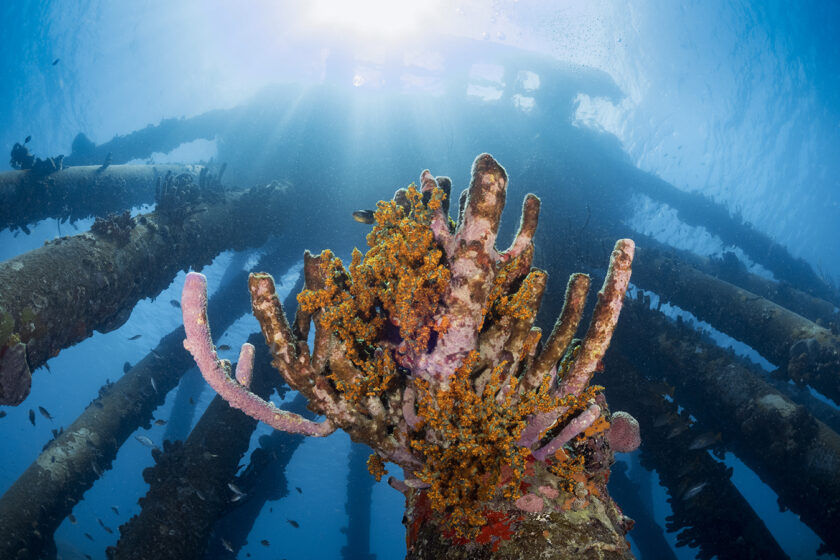Back when Bonaire became the high point of diving destinations in the Caribbean, there were two man-made structures received a lot of attention by divers as the “place to go” for day and night dives. The first was the Town Pier located on the waterfront of downtown Kralendijk. The other is a massive 600-foot-long loading pier owned by the Cargill North America which operates salt mining operation down on the island’s southern end.
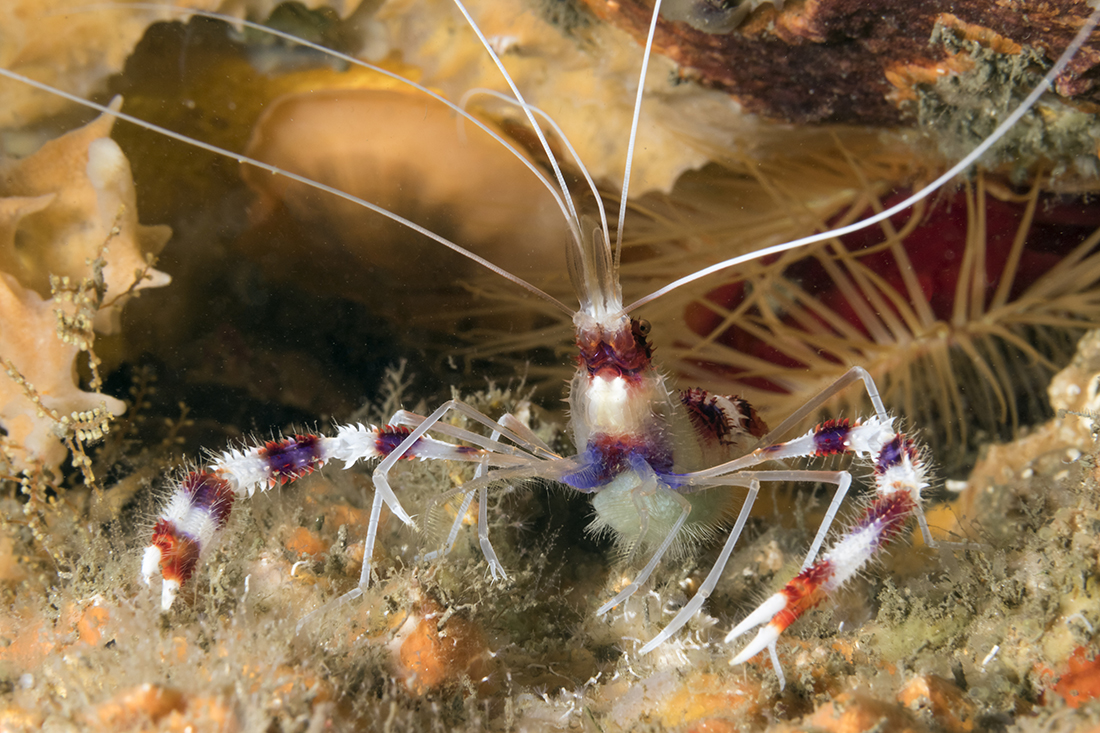
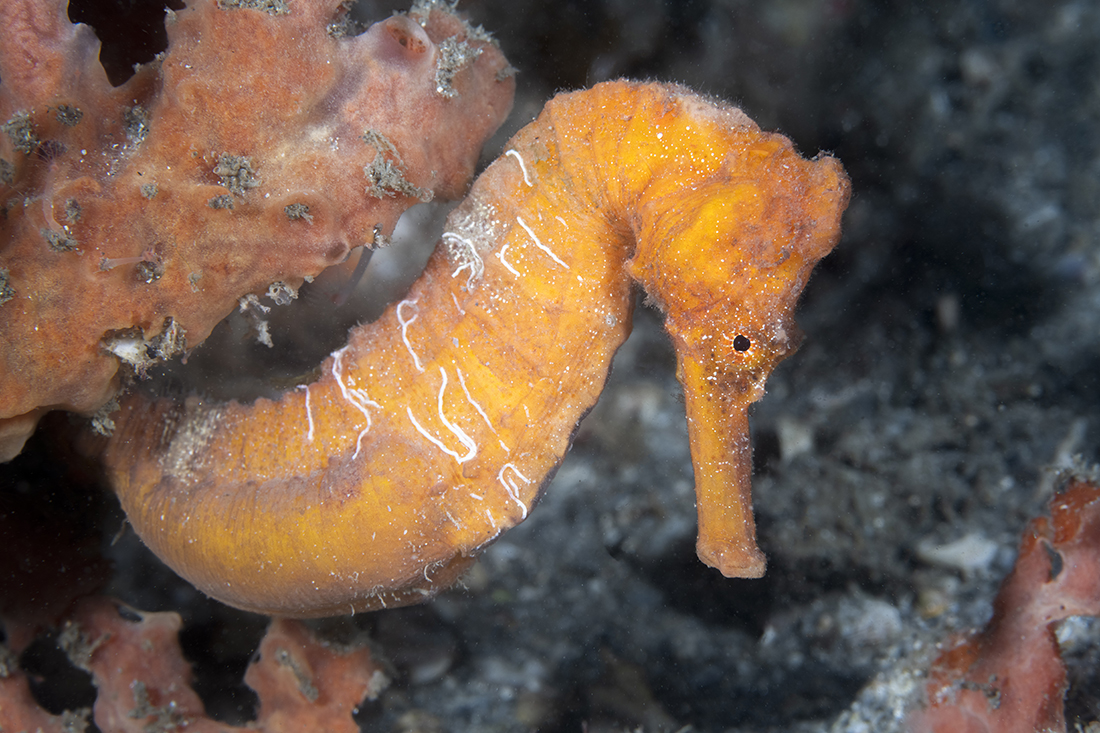
Some of the typical forms of marine life that are known to dwell below Bonaire’s Famed Piers.
By day the Town Pier’s L-shaped wharf would come across as something not particularly impressive but a night the concrete pilings covered orange cup corals would come alive in bright orange hues. But that was only the beginning of it as those same pilings with their heavy growth of sponges and corals served as shelter to a menagerie of invertebrates and small fish. Due to the increase in boat traffic, the Town Pier is pretty much off-limits to scuba diving. Fortunately, Bonaire’s Salt Pier down south is still very much open for business.
Beauty Among the pilings
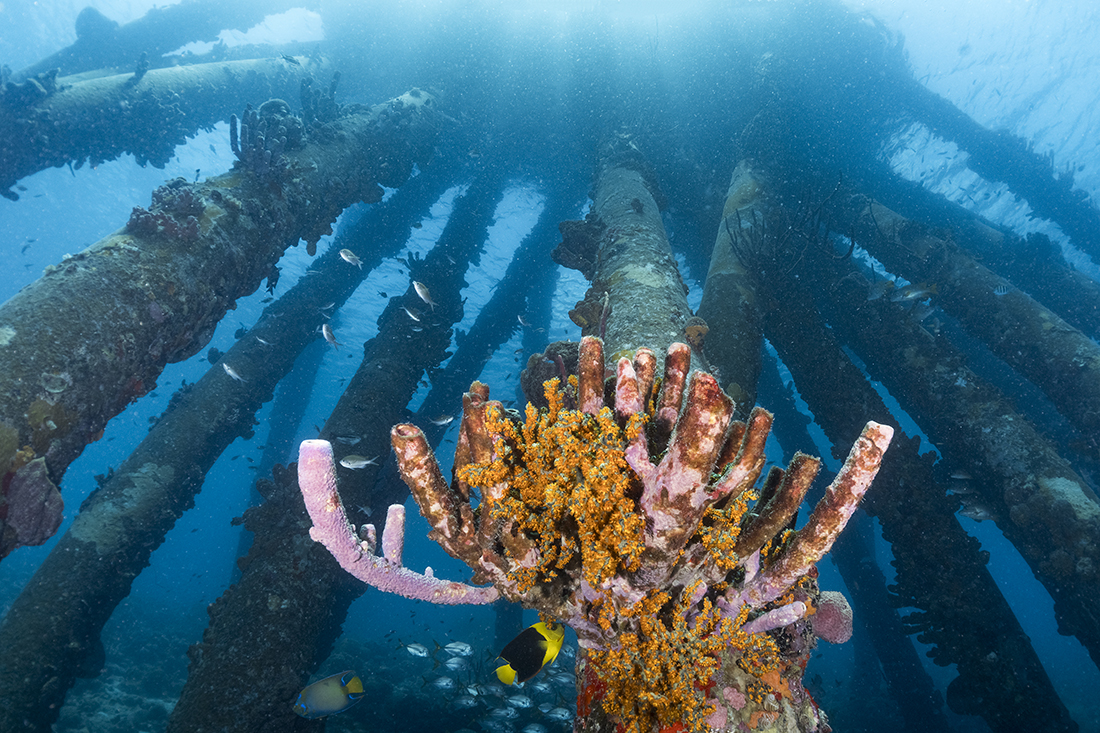
Bonaire’s Salt Pier remains one of my favorite dives on the island. It has been only a few years since I saw it last, but the images taken with both my camera and memory still burn brightly with splashes of vivid color and dancing rays of light filtering between the huge pier’s numerous columns like a late morning sun peaking into wooded glen.
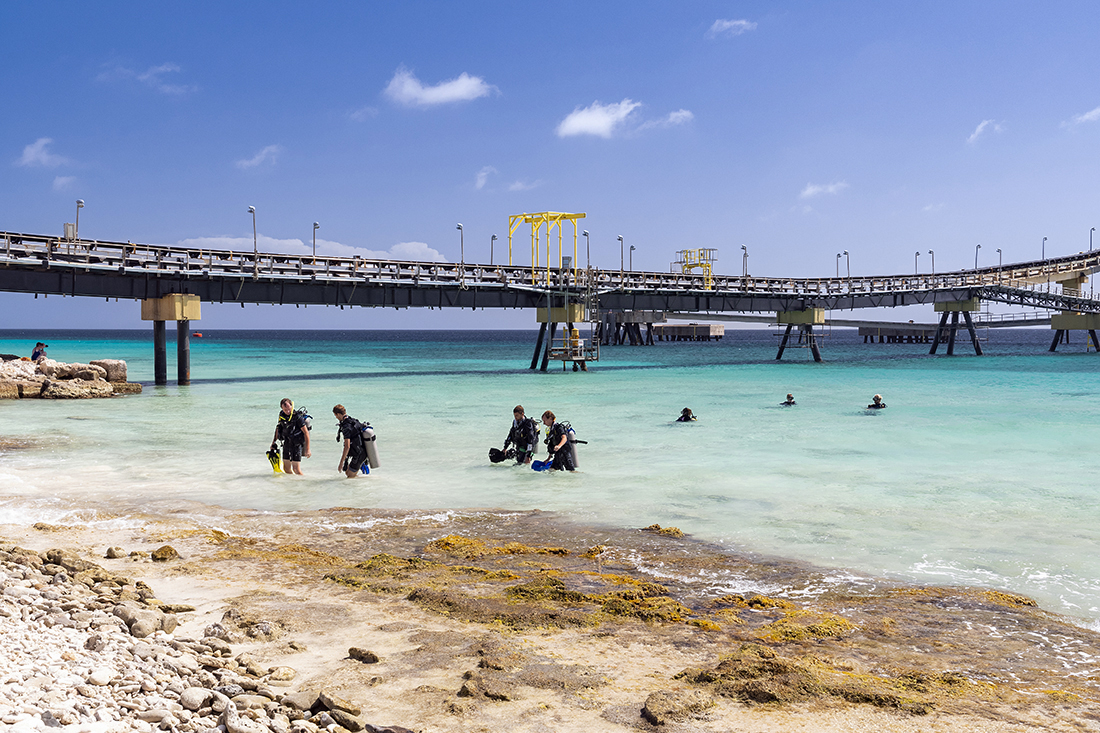
Located a few miles south of town on the coastal road, the pier rises above the flat landscape of the southern salt pans and stretches above and across the road before running another 600 feet into the sea. The pier features a conveyor track designed to carry sea salt harvested from the nearby evaporation ponds in bulk to freighters tide up its western terminus.
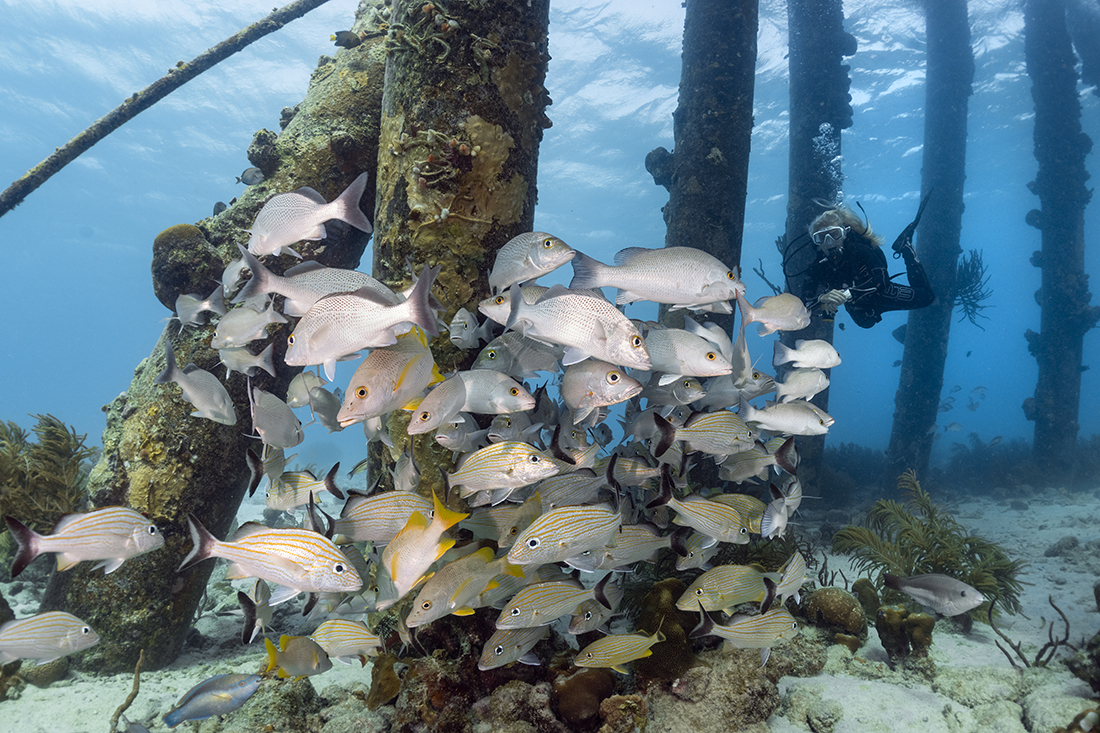
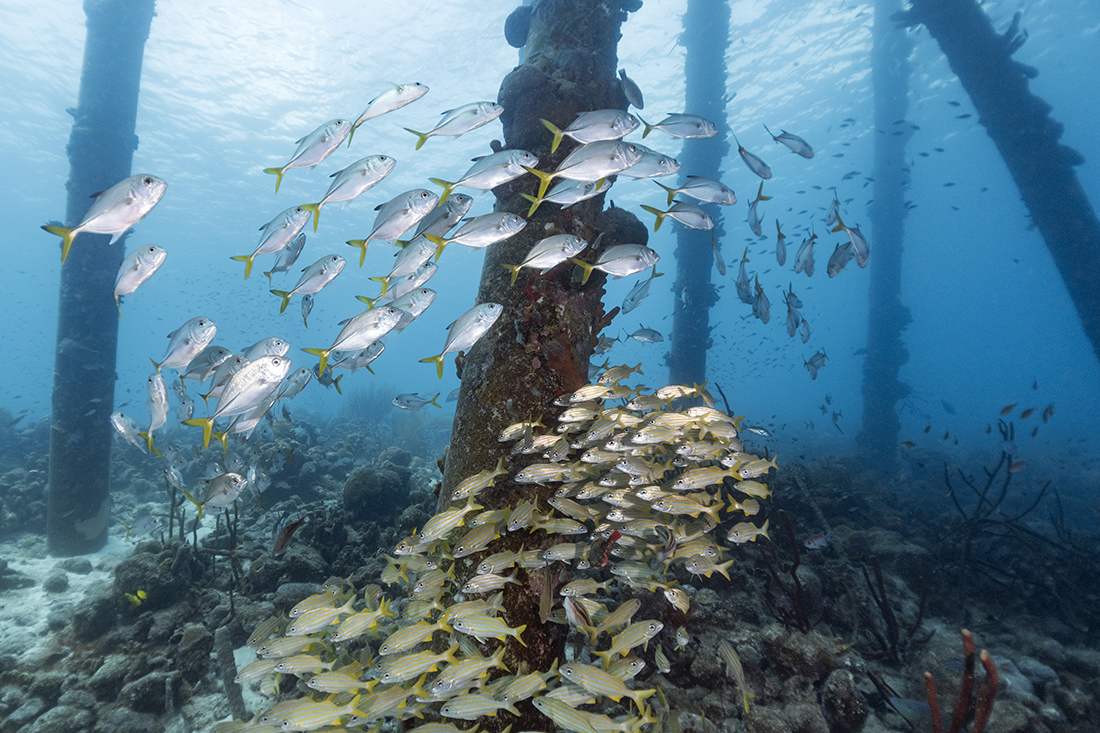
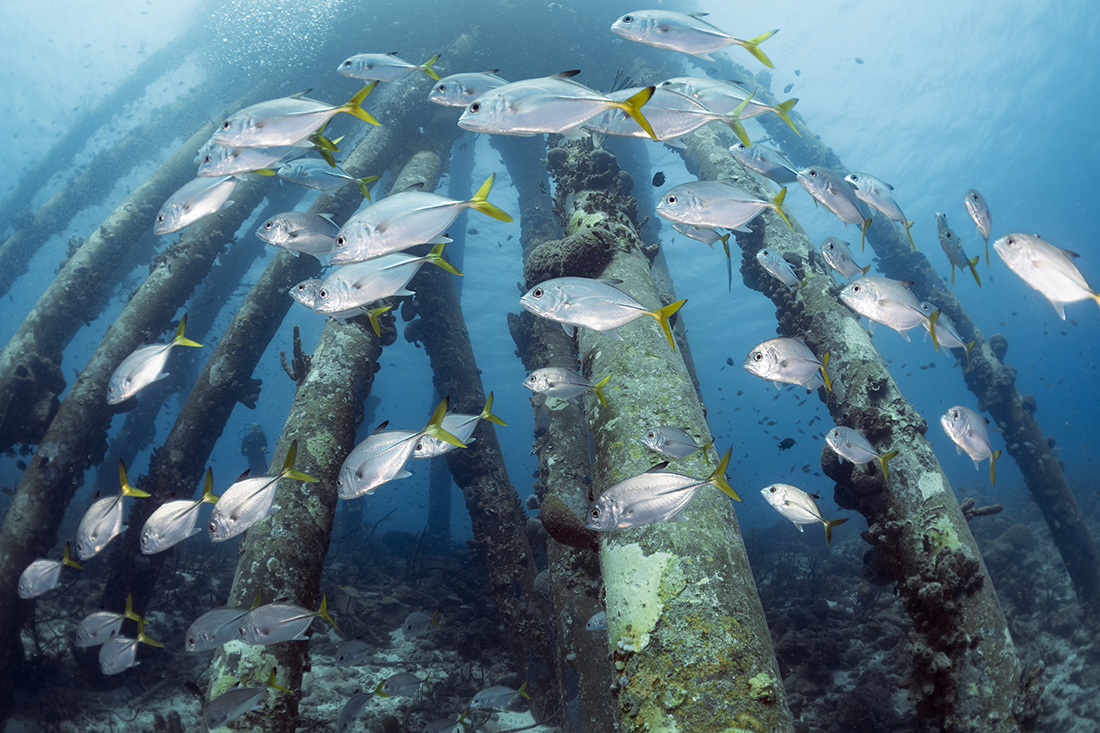
At this point, the pier forms a massive T-shape concourse of concrete and steel pilings spanning north and south. Below the surface, the pilings drop to a depth of 50 feet along the edge of the reef slope. Seen from underwater, the pier’s network of 3-foot diameter columns, resemble a forest of pine trees vaulting skyward. Adorning the huge round supports is a rich carpet of corals and sponges that create a bold montage of colors sometimes seeming to glow in the sunlight.
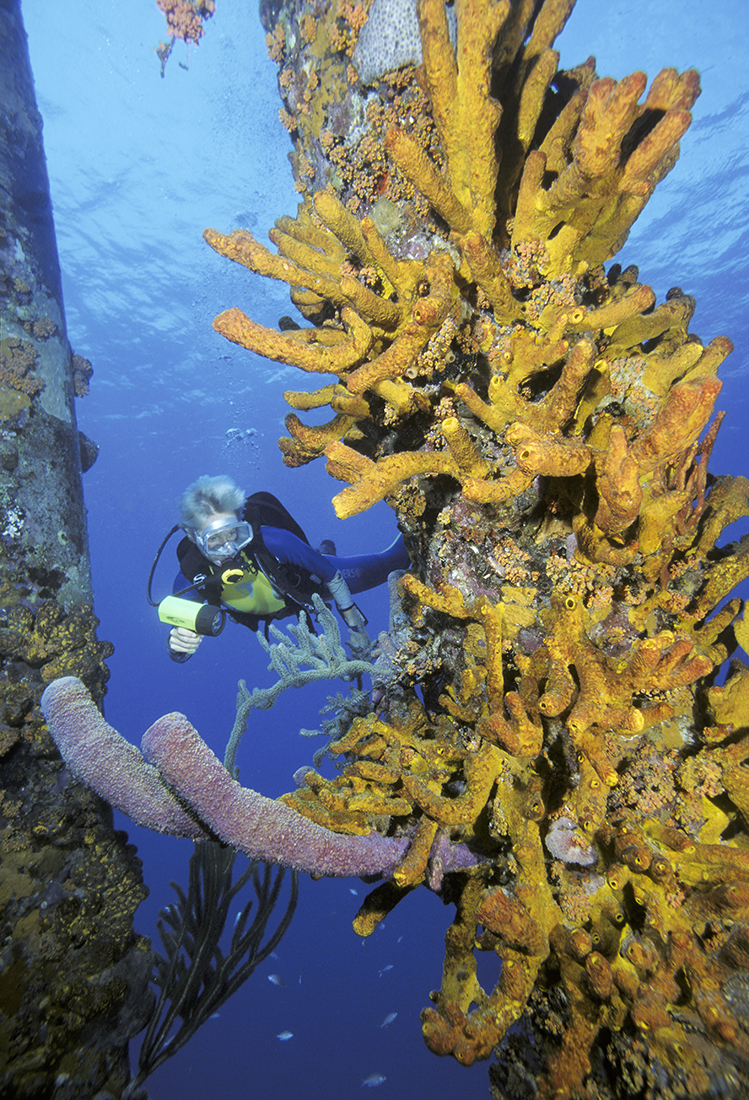
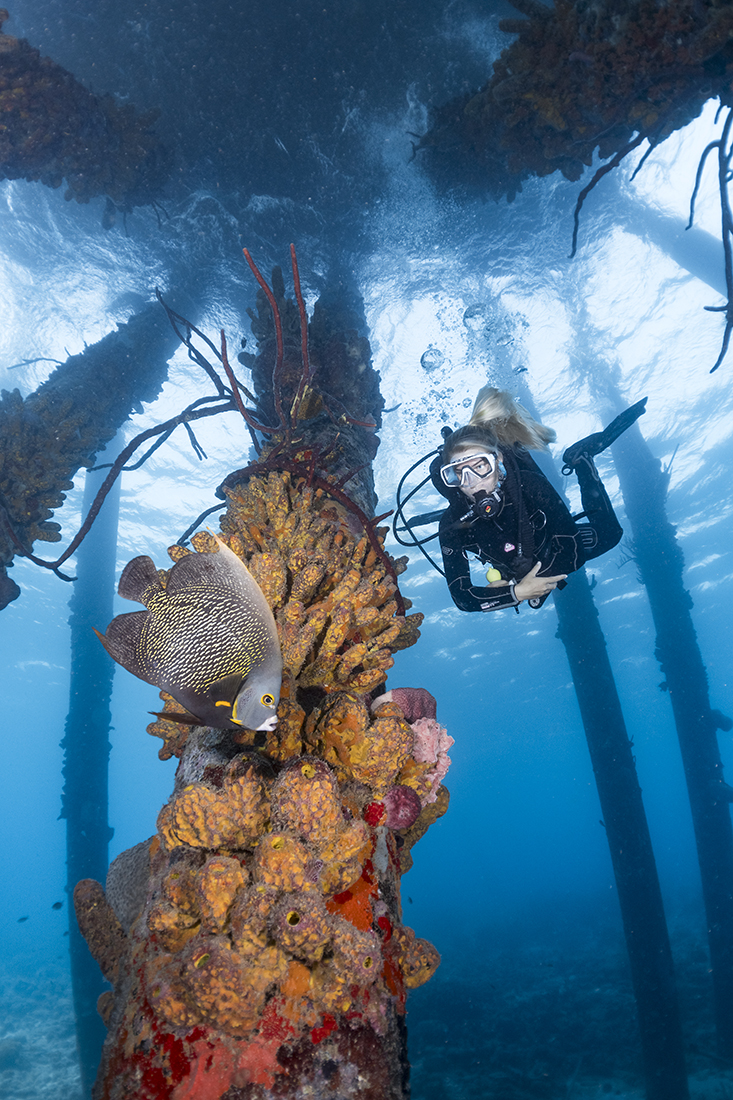
The pilings provide habitat and shelter for a variety of marine denizens, but it is the corals and sponge growth that truly set this site apart, as they create a wonderful hodgepodge of shapes and hues. Topping the list of attention grabbers is a bounty of orange cup corals along a variety of orange, yellow and purple tube sponges covering the pilings long cylindrical formations. Adding to these vibrant displays, schools of Creole wrasses and bogas can suddenly appear, turning an otherwise peaceful spot into a melee of activity.
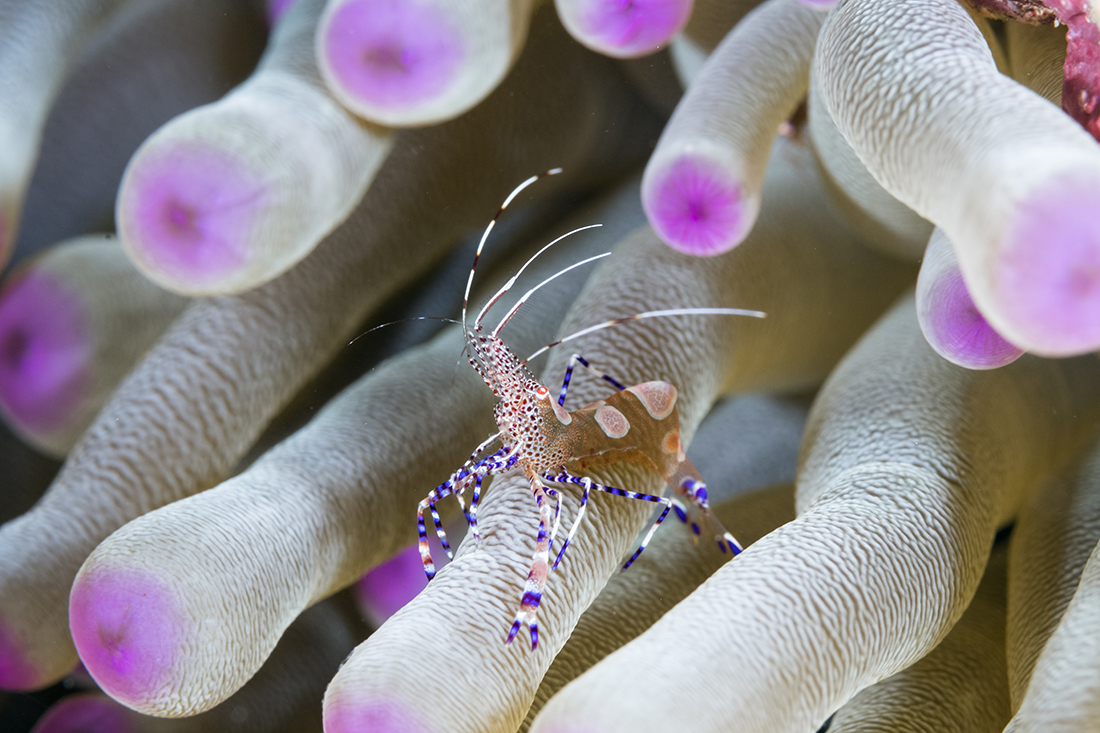
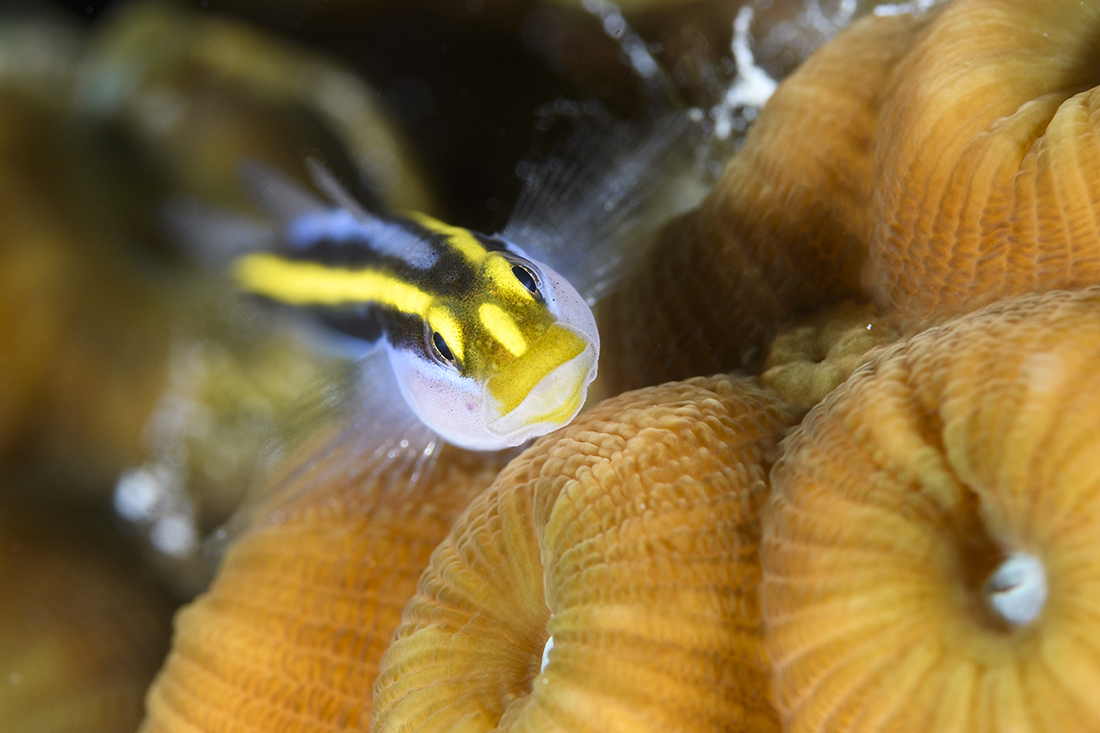
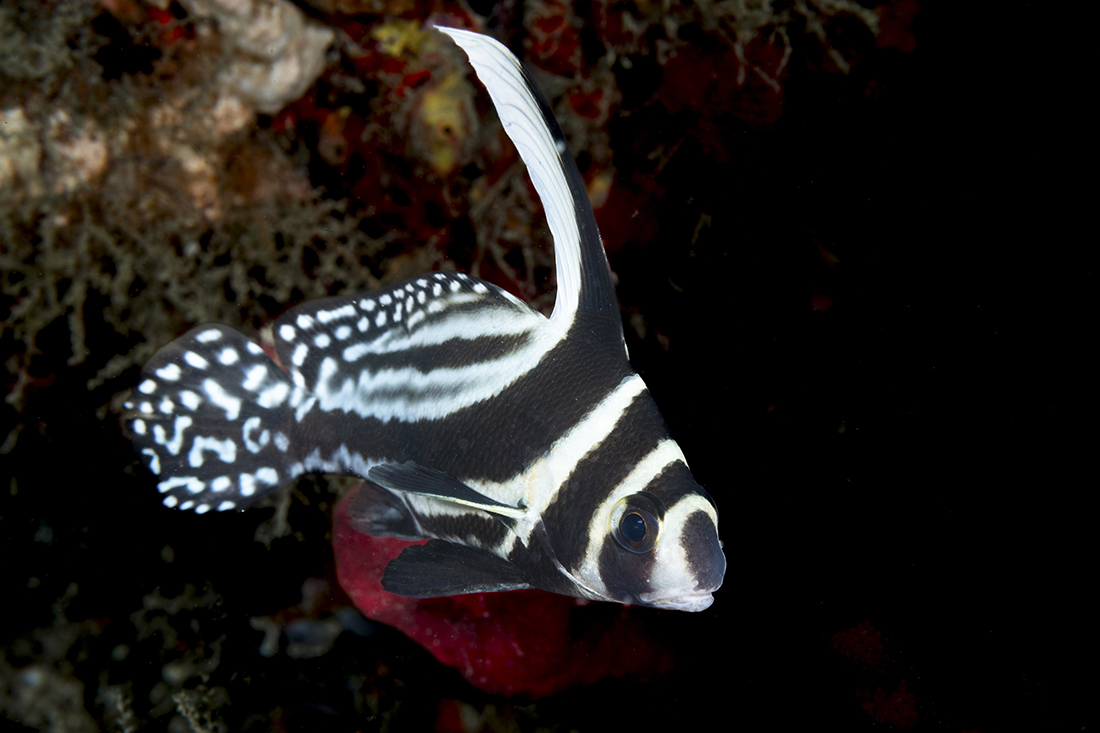
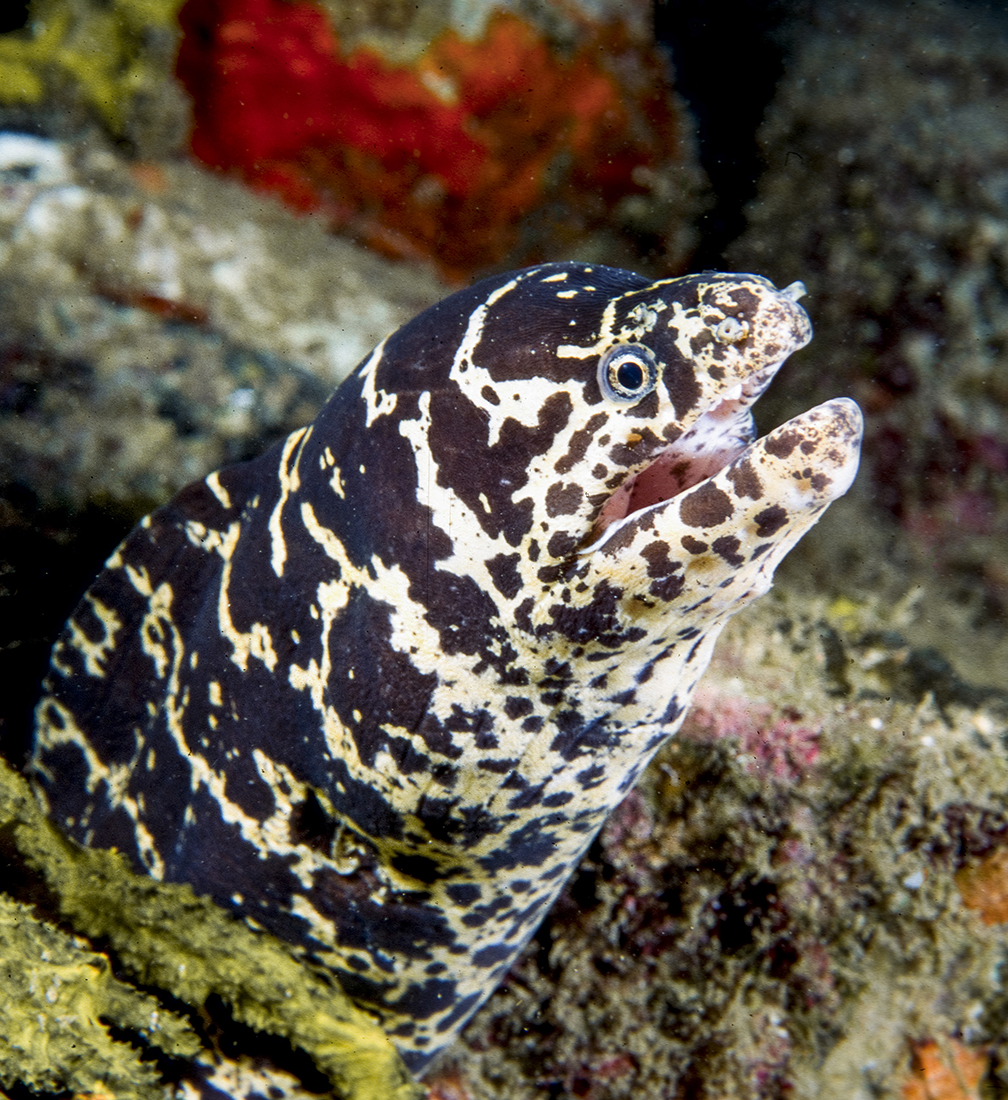
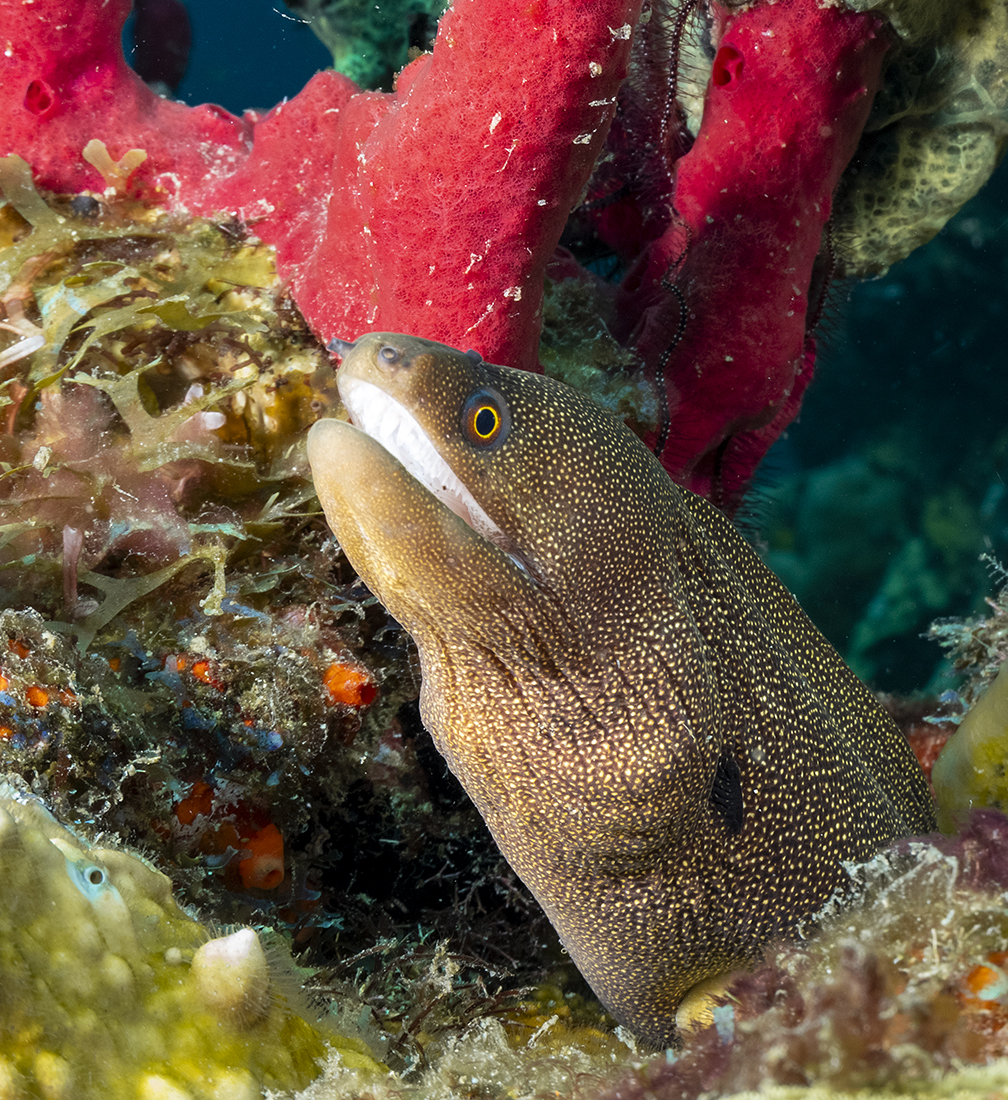
In addition to its scenic draw, there is also the Pier’s cryptic residents, from spotted cleaner shrimp to yellownose gobies, spotted drums, chain and goldentail morays and of course Bonaire’s trademark, the longlure frogfish.
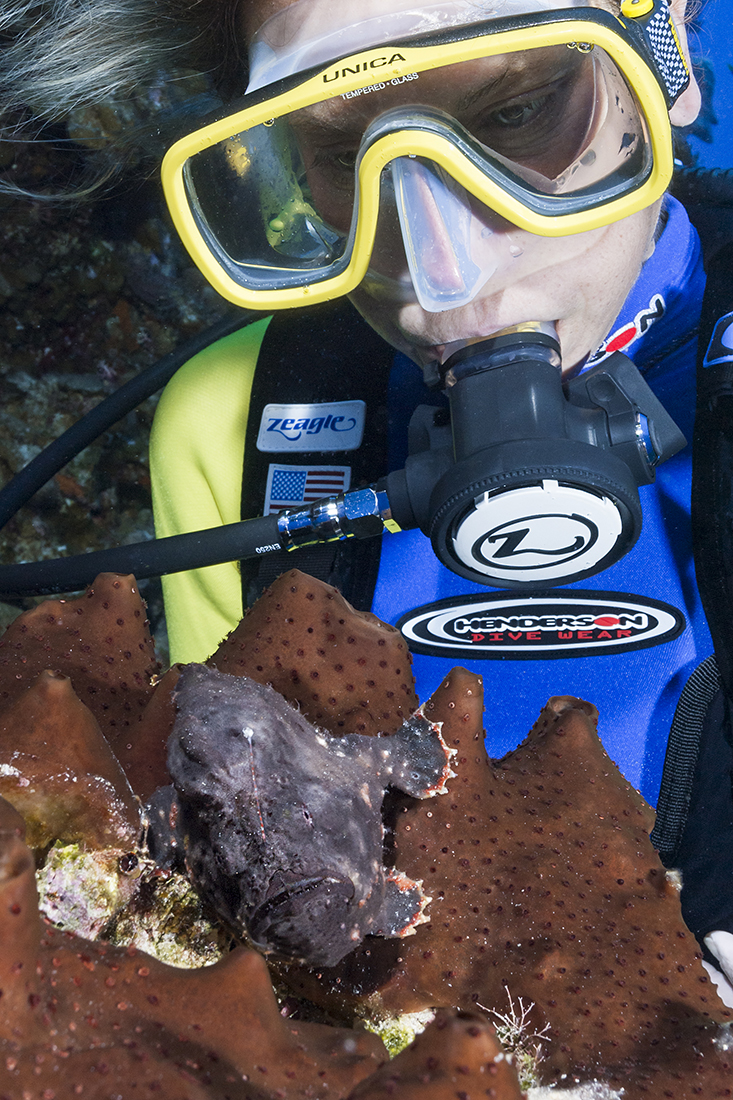
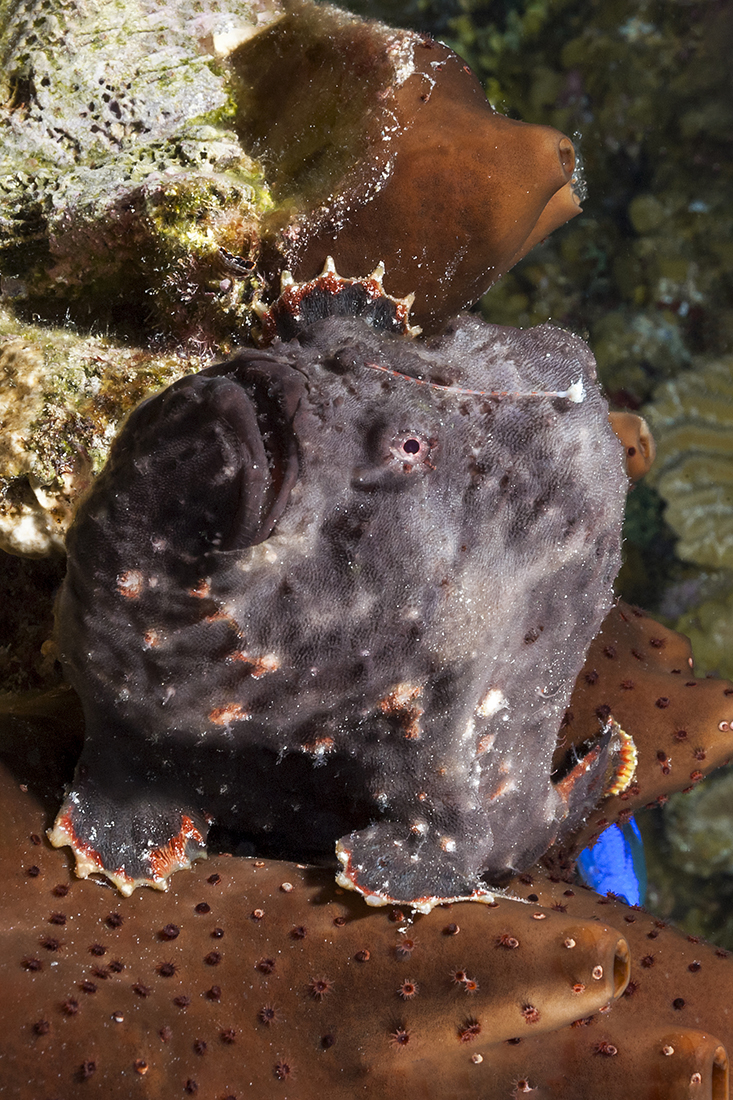
For as long as I can remember, divers have enjoyed the ability to access to the Salt Pier, save for those times when a freighter is docked and actively involved loading up on salt. During that time the pier would remain off-limits until the boat was out of sight. During the years post 9/11 I had been told that it was required to contact Bonaire’s Harbor Master first before considering looking to dive the Salt Pier, and that you had to be accompanied by a registered guide who was responsible for providing a complete list of participant names and passport numbers 24-hours in advance of any dive. Naturally, I had never needed to go that route.
While a number of divers (me included) prefer to dive the pier without a guide; typically parking south of the Cargill property and making a short walk and swim to access the pilings booking a guided dive through one of the island’s various dive operators still has its benefits. One of which is they typically know where to find the cool stuff like that sea horse or frogfish.
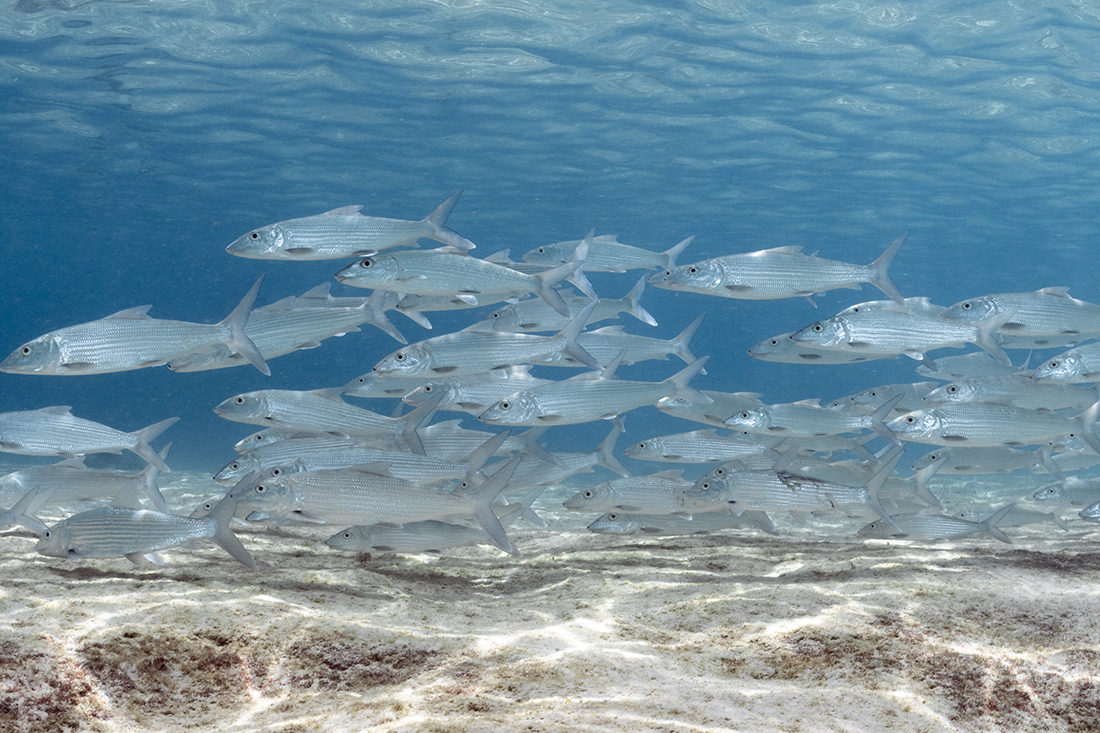
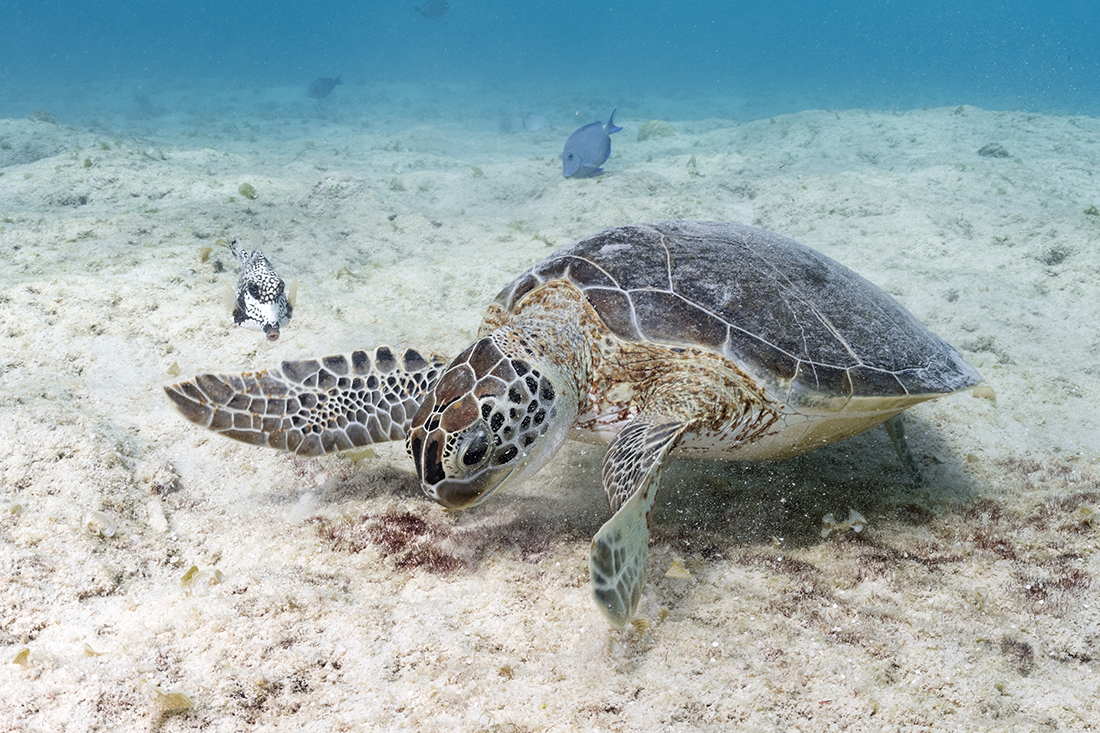
Another thing that needs to be mentioned. What you will see at the pier is not exclusive to the region around the pilings. On the swim out, as well as the way back to shore, you stand a very good chance at seeing a school of bonefish along with young green sea turtles roaming the shallows searching for something to eat.
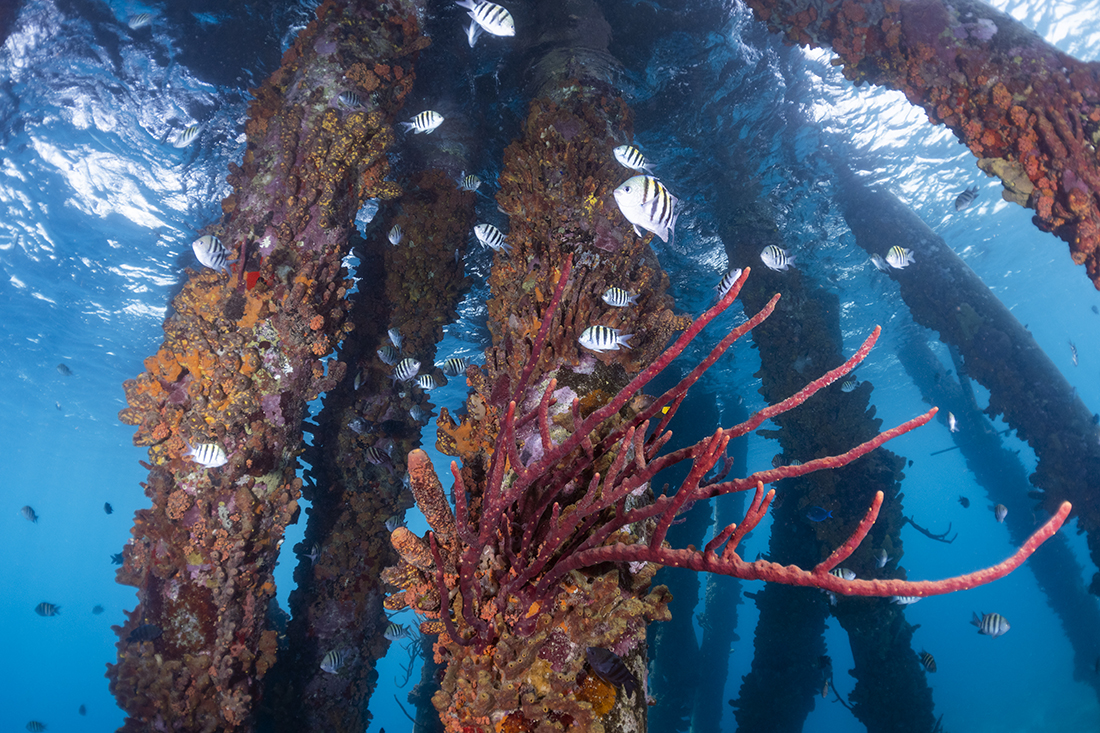
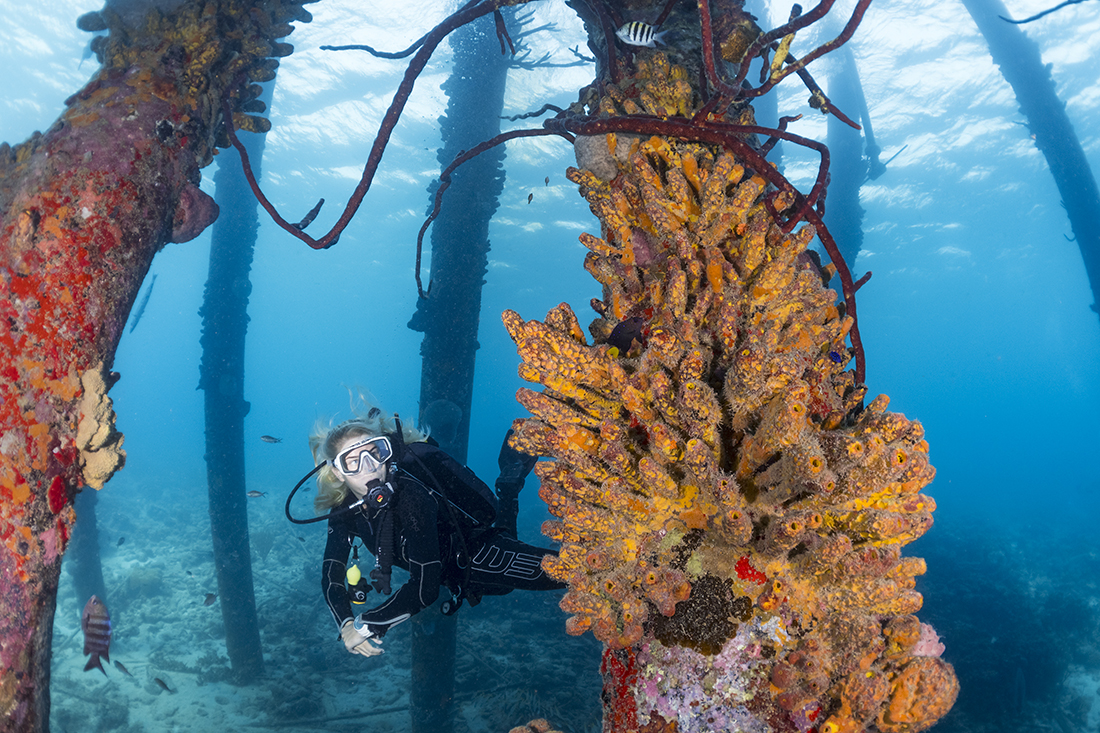
For as long as the pier remains a feature of the island’s coastline and remains open to diving it will remain my number one go to point as it will continuedly provide a unique underwater landscape seldom seen in the Caribbean.

